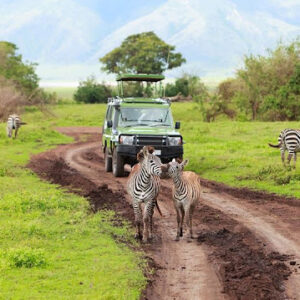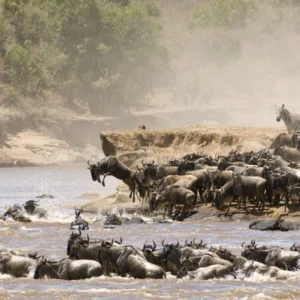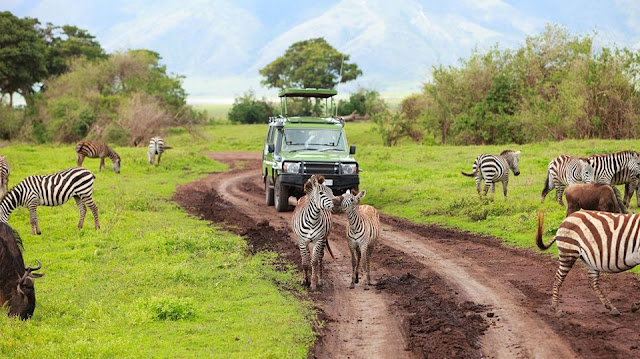How to choose a backpack for high-altitude trekking.
Choosing a backpack for high-altitude trekking requires balancing capacity, comfort, durability, and specific features tailored to the demands of mountain environments. Key considerations include volume based on trip length and gear needs, a proper fit for weight distribution and comfort, lightweight yet robust materials, and features like external attachment points, a good suspension system, and weather resistance. Trekking in high-altitude regions presents unique challenges and demands specific gear to ensure a safe and enjoyable experience. One of the most crucial pieces of equipment for any high-altitude trek is the backpack.
The right backpack can make all the difference, providing comfort, support, and convenience throughout your journey. Consider the amount of gear you need to carry, including clothing, food, water, and other essentials. A well-organized backpack with multiple compartments can help you manage your load efficiently. In this comprehensive guide, we’ll delve into the key factors to consider when selecting the perfect backpack for high-altitude trekking.
Frame: Providing Stability and Support
The frame of a backpack plays a vital role in providing stability and support, especially when navigating rugged terrain at high altitudes. When choosing a backpack for high-altitude trekking, opt for one with a sturdy internal or external frame. Internal frames are typically lighter and offer a more streamlined profile, ideal for fast-paced trekking. External frames, on the other hand, excel in carrying heavy loads and provide excellent weight distribution.
Volume: Finding the Right Capacity
The volume of your backpack determines how much gear you can carry, making it essential to choose a size that suits the duration and intensity of your trek. For high-altitude adventures where you may need to carry additional layers, camping gear, and provisions, opt for a backpack with a capacity of at least 50 to 70 liters. This size provides ample space for essential gear while ensuring your backpack remains manageable and well-balanced. Choosing Based on trek duration
Short Treks (1-3 days): A backpack with a capacity of 30-50 liters should suffice.
Medium Treks (3-5 days): Opt for a 50-60 liter backpack.
Long Treks (5+ days): A 60-70 liter backpack is ideal to accommodate additional gear and supplies.
Weight: Minimizing Load for Optimal Performance
High-altitude trekking often involves traversing steep inclines and navigating challenging terrain, making it crucial to minimize the weight of your backpack. Look for lightweight materials such as ripstop nylon or Cordura that offer durability without adding unnecessary bulk. Additionally, prioritize essential features while avoiding excessive gadgets or accessories that contribute to unnecessary weight. Nobody wants an unnecessarily heavy backpack, as that will wear you down. Instead, you want a backpack that’s as lightweight as possible, while still being strong, durable and large enough to carry all of your necessary gear. A full backpack that’s about 20% of your body weight is plenty of load to carry.
Size: Ensuring a Proper Fit
A properly fitted backpack is essential for comfort and stability, especially during long treks in high-altitude environments. Choose a backpack size that corresponds to your torso length, ensuring the hip belt sits comfortably on your hips and the shoulder straps snugly against your shoulders. Most backpacks offer adjustable suspension systems, allowing you to customize the fit for optimal comfort and performance.
Straps: Distributing Weight Effectively
The shoulder straps and hip belt of your backpack play a crucial role in distributing weight and reducing strain on your back and shoulders. Opt for padded shoulder straps and a contoured hip belt that conforms to your body shape for maximum comfort. Adjustable sternum straps and load lifters allow you to fine-tune the fit and balance of your backpack, ensuring even weight distribution and minimizing fatigue.
Organization and Accessibility: Convenience on the Trail
Efficient organization and easy accessibility are essential when selecting a backpack for high-altitude trekking. Look for backpacks with multiple compartments, zippered pockets, and gear loops to keep your gear organized and readily accessible. Additionally, consider features such as side access or front-loading capabilities for quick and convenient access to your gear without unpacking the entire contents of your backpack.
Hydration Pack: Staying Hydrated on the Trail
Staying hydrated is crucial during high-altitude trekking, where the dry air and increased exertion can lead to dehydration. Choose a backpack with a built-in hydration pack or compatibility with a hydration reservoir system. Hydration reservoirs with insulated hoses and bite valves make it easy to drink on the go, ensuring you stay hydrated throughout your trek without having to stop and unpack water bottles.
Ventilation: Keeping Cool and Comfortable
Ventilation is essential for staying cool and comfortable, especially during strenuous hikes in high-altitude environments. Look for backpacks with vented back panels or mesh suspension systems that promote airflow and prevent excessive sweating. Proper ventilation not only enhances comfort but also helps prevent moisture buildup. Reducing the risk of chafing and discomfort during long days on the trail.
Fabric: Durability and Weather Resistance
The fabric of your backpack plays a crucial role in its durability and weather resistance. Especially when trekking in rugged mountain terrain. Opt for ripstop nylon or Cordura fabrics that offer excellent abrasion resistance and water repellency. Additionally, look for backpacks with reinforced seams and waterproof coatings to keep your gear dry and protected from the elements.
Padding: Cushioning for Comfort
Ample padding in key areas such as the shoulder strap. Hip belt, and back panel is essential for comfort, especially when carrying heavy loads over long distances. Look for backpacks with thick, contoured padding that provides cushioning and support without adding unnecessary bulk. Adjustable padding allows you to customize the fit and ensure maximum comfort, even during extended treks.
Rain Cover: Protection from the Elements
High-altitude trekking often exposes you to unpredictable weather conditions, including sudden rain showers and snowstorms. Ensure your backpack is equipped with a removable rain cover or integrated waterproofing to protect your gear from moisture and precipitation. A rain cover provides an additional layer of protection, keeping your belongings dry and secure during inclement weather.
10 Best backpacks for high-altitude mountain trekking
- Osprey Atmos AG 65: A well-rounded choice for overall performance
- Hyperlite Mountain Gear Southwest 3400: Ideal for ultralight enthusiasts
- Osprey Exos 58: Lightweight with excellent ventilation
- Gregory Baltoro 75: Great for extended trips
- Deuter AirContact Lite 65+10: Handles heavy loads well
- REI Co-op Trailbreak 60: Affordable and good quality
- Gregory Men’s Katmai 55 & Women’s Kalmia 50: Features a breathable backpanel
- The North Face Women’s Terra 55: Designed specifically for women
- Hyperlite Mountain Gear Southwest 40: Ultralight and efficient
- Osprey Aether Plus AG70/85: Large capacity for extended treks
How do you choose the right backpack for your height?
For the pack to fit correctly, the distance from the top of the shoulder strap to the hip belt needs to accommodate your torso length. Keep in mind that torso length is not the same as height. A tall person can have a short torso, while a smaller person can have a relatively long torso.
How to choose a backpack for trekking?
It’s important to choose a backpack that has the right capacity for your needs and the duration of your trip or hike. If you’re going on a trip for several days, you will need a large capacity backpack, while a small or medium capacity backpack will be enough for a day trip.
What is the difference between hiking and trekking backpacks?
A hiking backpack usually provides less space than a trekking backpack. The most popular sizes range from about 15 to 30 liters volume. The obvious reason is that you simply do not need certain equipment as you do not stay overnight outdoors.
What size backpack do I need for high-altitude trekking?
The size of the backpack depends on various factors such as the duration of your trek, the amount of gear you need to carry, and personal preference. Generally, backpacks with a capacity of 50 to 70 liters are suitable for high-altitude trekking. Shorter trips or minimalist packers may opt for a smaller pack, while longer treks or those requiring additional gear may necessitate a larger pack.
What is the ideal weight for a high-altitude trekking backpack?
The ideal weight for a backpack used in high-altitude trekking is lightweight yet durable. Aim for a pack that balances weight savings with functionality and durability. Backpacks made from materials like ripstop nylon, Cordura nylon, or Dyneema offer excellent durability without adding unnecessary weight.
How do I choose the right size backpack for my body?
Choosing the right size backpack involves measuring your torso length and selecting a pack with an appropriate frame size. Most manufacturers provide sizing charts based on torso length to help you find the perfect fit. Additionally, look for backpacks with adjustable suspension systems that allow you to customize the fit to your body shape.
What features should I look for in the straps of a high-altitude trekking backpack?
Straps are crucial for comfort and load distribution how to choose a backpack for high-altitude trekking. Look for backpacks with padded, adjustable shoulder straps that can accommodate different body shapes and sizes. Additionally, ensure the backpack has a well-padded hip belt to transfer the weight from your shoulders to your hips, reducing strain on your back.
How important is organization and accessibility in a high-altitude trekking backpack?
Efficient organization and accessibility can significantly enhance your trekking experience how to choose a backpack for high-altitude trekking. Look for backpacks with multiple compartments and pockets to keep your gear organized and easily accessible. Features like top-loading, side-loading, and front-loading openings provide versatile access points to your gear, allowing you to quickly retrieve items when needed.
Is hydration pack compatibility essential for high-altitude trekking?
Staying hydrated is crucial at high altitudes, making hydration pack compatibility a valuable feature. Look for backpacks with dedicated sleeves and ports for hydration reservoirs, allowing you to drink hands-free while on the move. Some backpacks also include additional pockets for carrying water bottles, providing flexibility in managing your water supply.
What role does ventilation play in a high-altitude trekking backpack?
Proper ventilation is essential for comfort during long treks, especially in warmer climates. Backpacks with ventilated back panels, mesh panels, air channels, or suspended mesh systems promote airflow between your back and the pack, reducing sweating and keeping you cool and comfortable.
How important is fabric quality in a high-altitude trekking backpack?
Fabric quality determines the durability and weather resistance of the backpack. Look for backpacks made from high-quality materials like Cordura nylon, ripstop nylon, or Dyneema, which offer excellent abrasion resistance and water repellency. Water-resistant coatings or DWR treatments can provide additional protection against moisture.
Do I need a rain cover for my high-altitude trekking backpack?
A rain cover is essential for protecting your gear from rain, snow, and moisture during high-altitude treks. Some backpacks come with integrated rain covers stored in dedicated pockets, while others require you to purchase them separately. Ensure the rain cover fits snugly over your backpack and provides complete coverage to keep your gear dry and safe.
How do I ensure the padding in my backpack is sufficient for high-altitude trekking?
Adequate padding in key areas such as the shoulder straps, hip belt, and back panel is essential for comfort during long treks. Look for backpacks with high-density foam padding that conforms to your body shape and provides ample support. Check that the padding is breathable to prevent excessive sweating and discomfort during strenuous activities.
In conclusion: How to choose a backpack for high-altitude trekking
Choosing the perfect backpack for high-altitude trekking requires careful consideration of various factors. Including frame design, volume, weight, size, straps, organization, hydration, ventilation, fabric, padding, and rain protection. By prioritizing comfort, durability, and functionality, you can select a backpack that enhances your overall trekking experience and ensures you’re prepared for whatever challenges the trail may present.








